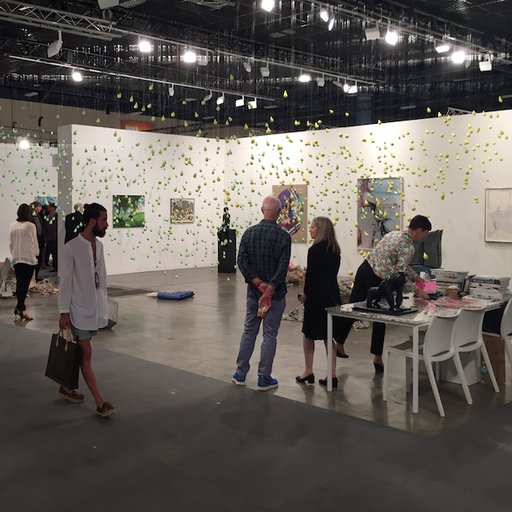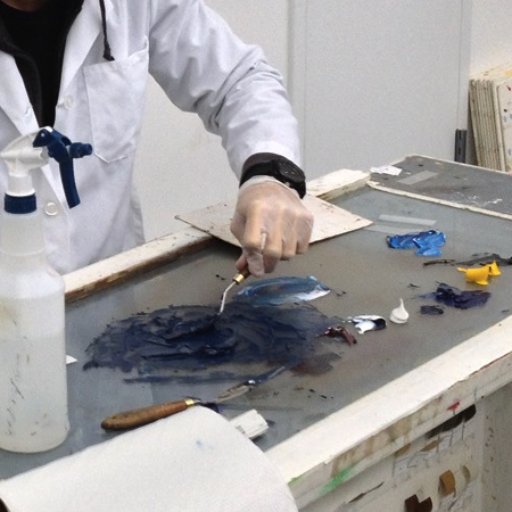Alex Hubbard
Alex Hubbard is known for a cyclical comparison between painting and video—painting as an allegory for the everyday gesture, and video considers the ways in which the mundane gesture of mark making is performative. His two-dimensional works are sculptural assemblages with items scattered across slick, thick grounds of paint, sinking into the canvas. The artist regularly uses materials such as resin, fibreglass, and trowelled or stencilled plastic to underscore the mechanical implications of his seemingly monotonous production. In his videos, Hubbard includes his tightly-cropped physical body to spur an action that often includes painterly manipulation of unconventional objects. Annotated Plans for an Escape Route, for example, employs painting techniques to turn a used car into a three-dimensional canvas. Hubbard’s practice considers formal expectations of paint and challenges the hierarchy of traditional production, display, materials, and grounds for artmaking.
Hubbard has exhibited his work at institutions such as Rose Art Museum, Waltham, Massachusetts, Hammer Museum, Los Angeles, The Kitchen, New York, Whitney Museum of American Art, New York, Gemeente Museum, The Hague, Kunstlerhaus, Gras, Austria, Swiss Institute, New York, Atlanta Contemporary Art Center, Georgia, Museo Tamayo, Mexico City, Museum Tinguely, Basel, and Institute of Contemporary Art, Philadelphia. He participated in …
Alex Hubbard is known for a cyclical comparison between painting and video—painting as an allegory for the everyday gesture, and video considers the ways in which the mundane gesture of mark making is performative. His two-dimensional works are sculptural assemblages with items scattered across slick, thick grounds of paint, sinking into the canvas. The artist regularly uses materials such as resin, fibreglass, and trowelled or stencilled plastic to underscore the mechanical implications of his seemingly monotonous production. In his videos, Hubbard includes his tightly-cropped physical body to spur an action that often includes painterly manipulation of unconventional objects. Annotated Plans for an Escape Route, for example, employs painting techniques to turn a used car into a three-dimensional canvas. Hubbard’s practice considers formal expectations of paint and challenges the hierarchy of traditional production, display, materials, and grounds for artmaking.
Hubbard has exhibited his work at institutions such as Rose Art Museum, Waltham, Massachusetts, Hammer Museum, Los Angeles, The Kitchen, New York, Whitney Museum of American Art, New York, Gemeente Museum, The Hague, Kunstlerhaus, Gras, Austria, Swiss Institute, New York, Atlanta Contemporary Art Center, Georgia, Museo Tamayo, Mexico City, Museum Tinguely, Basel, and Institute of Contemporary Art, Philadelphia. He participated in Greater New York at MoMA PS 1 and the Whitney Biennial in 2010.
FRAC - Poitou-Charentes, Angoule me, France
Jumex Foundation, Mexico City, Mexico
Museum of Modern Art (MOMA), New York, New York
Seattle Art Museum, Seattle, Washington
Museum of Contemporary Art - North Miami (MOCA), Miami, Florida
Simon Lee Gallery, New York, New York and London, United Kingdom
STANDARD, Oslo, Norway






